This post may contain affiliate links. Please read our disclosure policy.
This classic Spaghetti Aglio e Olio is the ultimate simple meal. Using just pasta, garlic, olive oil, and chili flakes, this flavorful and satisfying dish is ready in 15 minutes.
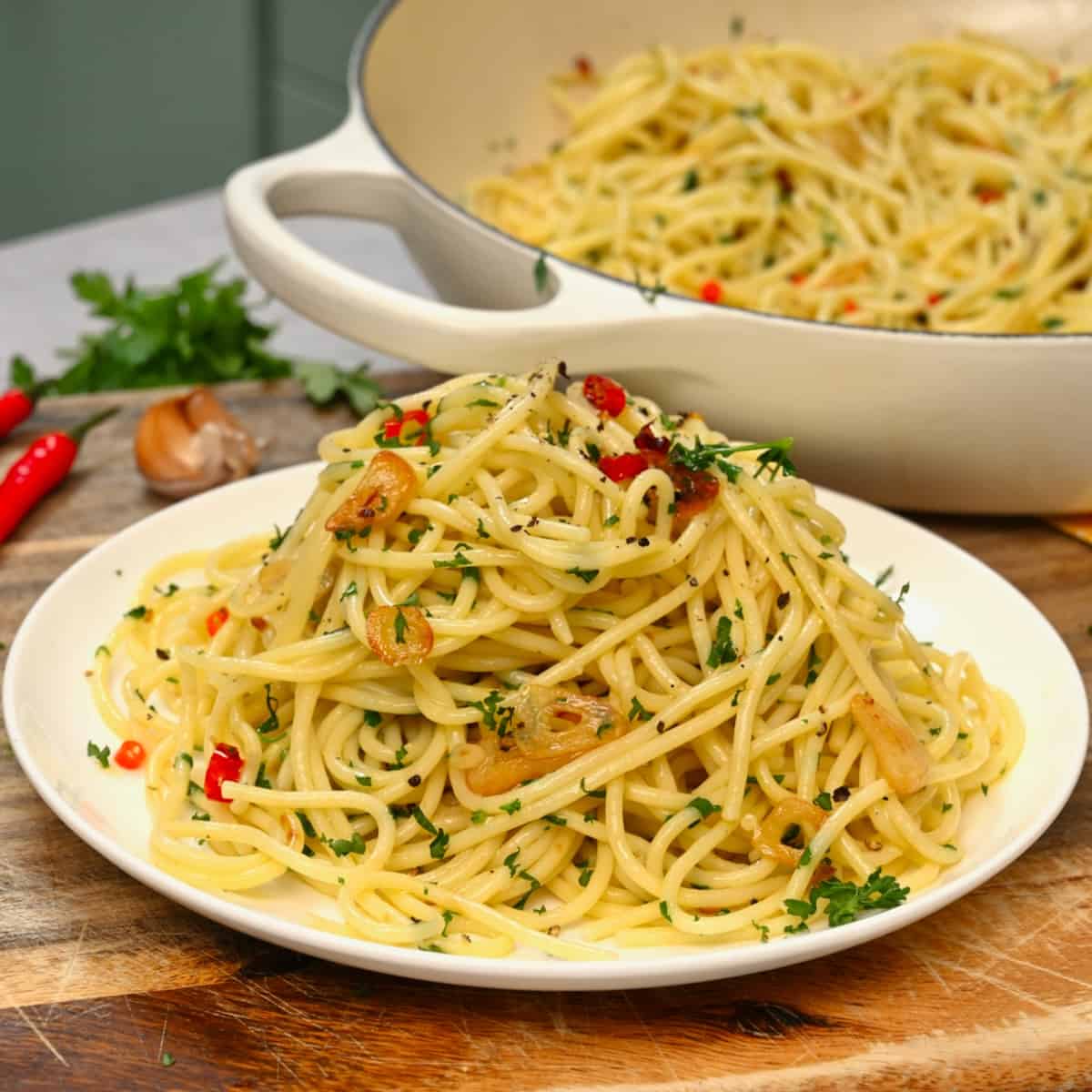
Spaghetti aglio e olio (Italian for spaghetti with garlic and oil) is a traditional Italian pasta recipe from Naples known for its simplicity and inexpensive ingredients. Unsurprisingly, the main components of this pasta dish are aglio e olio (garlic and olive oil).
What I love about this recipe is that it’s super quick to make (ready in 15 minutes!) and is super flavorful and satisfying. You can enjoy it on its own or accompany it with a simple cucumber tomato salad.
Want to save this recipe?
Watch how to make it
Ingredients
This easy garlic and olive oil pasta recipe requires just a few pantry staple ingredients!
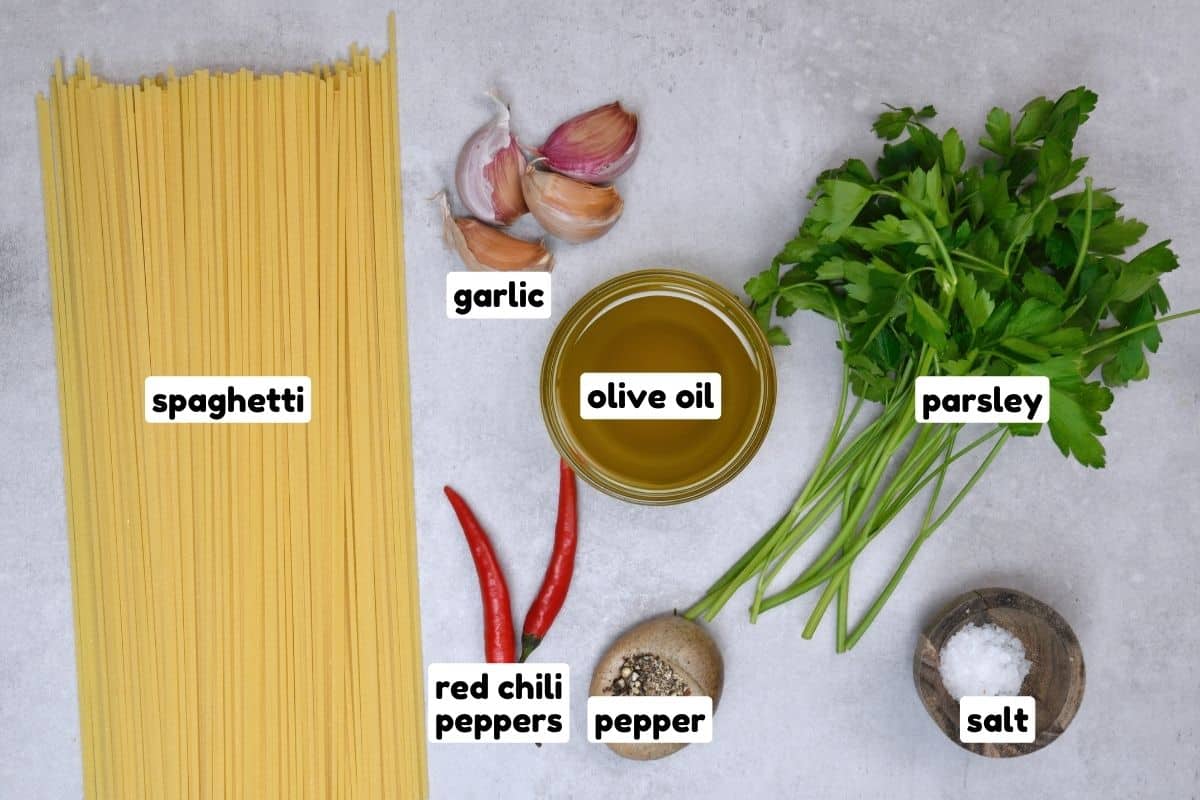
- Pasta: Traditionally, the recipe is made with spaghetti. However, most long-shaped noodles will work: fettuccine, angel hair, linguine, tagliatelle, pappardelle, fusilli lunghi,etc.
- Garlic: Adjust the amount to personal taste.
- Red chili pepper: Optional, but it adds wonderful bursts of flavor throughout. Adjust the amount to taste.
- Olive oil: It’s best to use high-quality extra-virgin olive oil.
- Salt: To add to the pasta water. You may also want additional salt and black pepper to season this dish.
- To garnish (optional): Finely chopped fresh parsley, some freshly grated parmesan cheese, or your favorite toppings.
How to make spaghetti aglio e olio
Prepare the Pasta: First, boil the pasta in salted water according to its package instructions minus 1-2 minutes for al dente results. When it’s ready, drain the pasta cooking water into a bowl and reserve it. Then place the spaghetti back in the pan to keep warm.
Prepare the Garlic and Olive Oil: Meanwhile, as the pasta cooks, thinly slice the garlic cloves and chili and finely chop the parsley.
Then, when there are just a couple of minutes left to cook the pasta, heat the olive oil in a large skillet over medium-low heat. Once hot, add the garlic and chili and cook until fragrant and lightly browning, about 2-3 minutes.
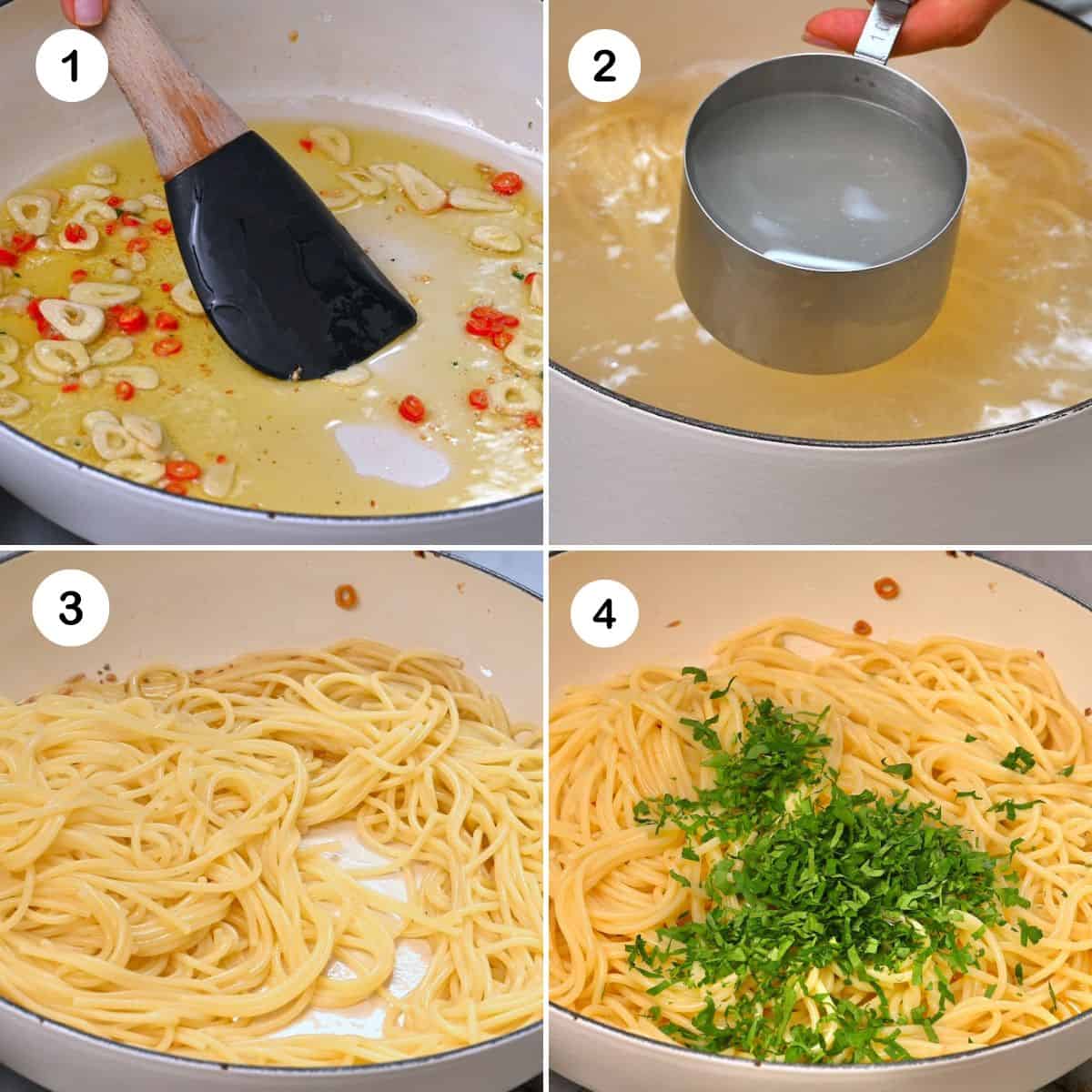
Combine and Season: Next, add the drained spaghetti and about 1/4-1/2 a cup of pasta cooking liquid and toss well to coat the pasta with the garlic oil. Season with salt and pepper, and add the chopped parsley. Give the garlic olive oil spaghetti one last stir to combine everything.
Serve: Serve with your favorite toppings and enjoy this fresh classic spaghetti aglio e olio.
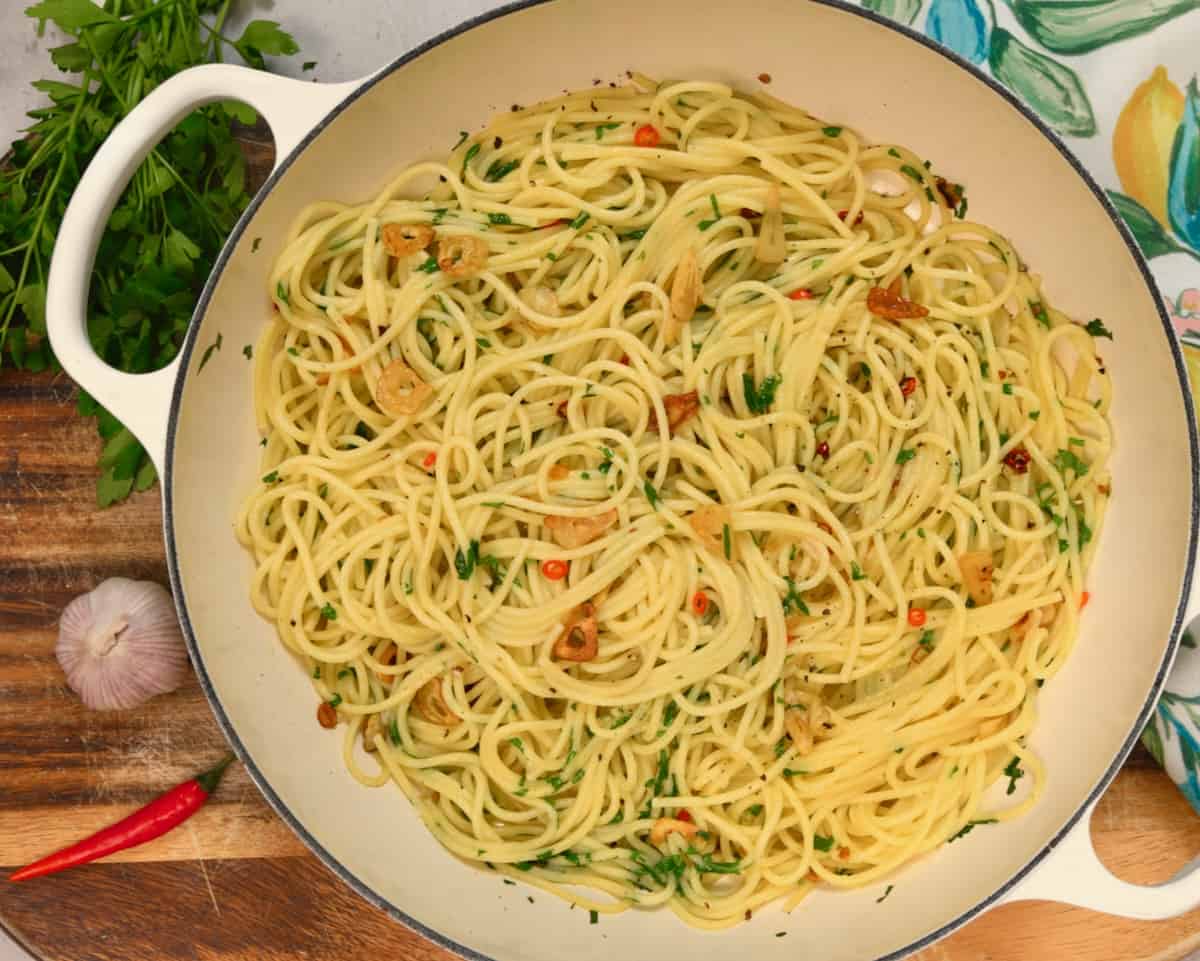
Important tips
- Get all your ingredients ready before you start cooking. This is key because the pasta can quickly become sticky and clump together so you need to move quickly with the cooking steps.
- Salt the pasta: This will enhance the flavor, so I highly recommend it.
- Keep an eye on the garlic: It can burn quickly, so monitor it closely.
- Cook the pasta until al dente: This is the way to serve a classic Italian pasta with garlic and olive oil. Plus, this avoids mushy pasta when reheating leftovers.
More Italian pasta recipes
If you try this easy pasta aglio e olio recipe, let me know how it goes in the comments below. I’d appreciate a recipe card rating and would love to see your recipe recreations – tag me on Instagram @Alphafoodie!
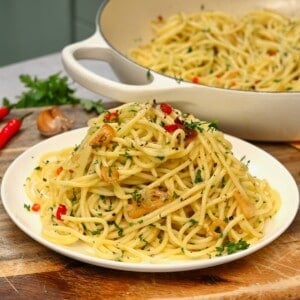
Spaghetti Aglio e Olio
Ingredients
- 9 oz spaghetti
- 7 cloves garlic adjust to taste
- 2 red chili pepper optional; OR 1 tsp red pepper flakes
- 1/3 cup extra virgin olive oil
- 1/4 cup parsley chopped
- 1 tsp salt to salt the water
- 1/2 cup pasta water reserved when cooking the pasta
- salt and pepper to taste
Instructions
- Cook the pasta in salted water according to its package instructions minus 1-2 minutes for al dente results.Once ready, drain the pasta water into a cup and reserve it. Then, return the spaghetti to the pan to keep warm.
- Meanwhile, thinly slice the garlic cloves and chili. Finely chop the parsley.
- Heat the olive oil in a large skillet over medium-low heat. Add the garlic and chili and cook them until fragrant and lightly browning – about 2-3 minutes.
- Add the spaghetti and about 1/4-1/2 a cup of pasta water and stir well to coat the pasta with the garlic oil.
- Season with salt and pepper, and add the chopped parsley – stir to combine everything. Serve and enjoy!
Video
Notes
Nutrition
Nutrition information is automatically calculated, so should only be used as an approximation.

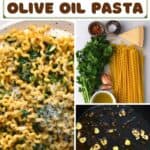
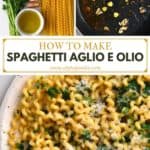
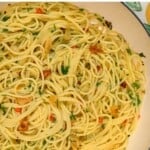
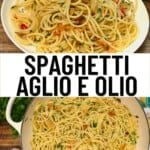

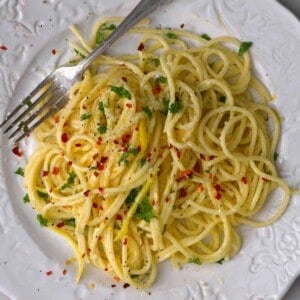
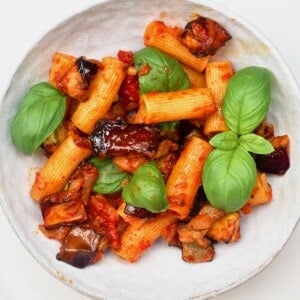
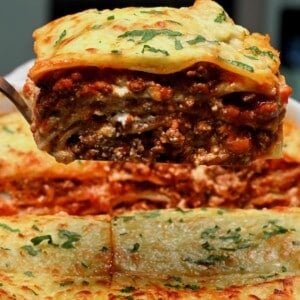









How can something so simple seem like such an indulgent meal? This was so satisfying. I added some homemade pork meatballs to this as well.
I used chickpea noodles, but I need to be careful to not overcook. Fresh tasting and flavorful between the simple ingredients of parmesan, garlic and parsley!
So happy you liked the recipe, Jean!